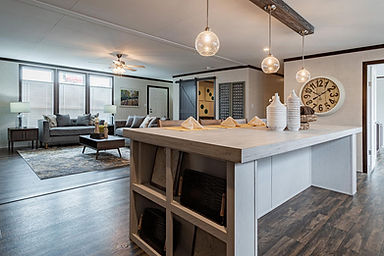The process of building a mobile home and why it's a better investment
In recent years, mobile homes have gained popularity as a smart, affordable, and efficient alternative for those looking to invest in a home. Unlike traditional construction, the manufacturing process of a mobile home is carried out in a controlled environment, with high quality standards and a focus on resource optimization. This not only reduces costs but also ensures faster and more reliable construction.





The Construction Process of a Mobile Home and Why It’s a Better Investment
In recent years, mobile homes have become increasingly popular as a smart, affordable, and efficient alternative for those looking to invest in housing. Unlike traditional construction, the building process of a mobile home takes place in a controlled environment, with strict quality standards and a focus on resource optimization. This not only reduces costs but also ensures faster and more reliable construction.
Step-by-Step Construction Process
-
Design and planning:
It all starts with creating blueprints and models tailored to the buyer’s needs. At this stage, the layout, materials, finishes, and extra features are defined, allowing a clear vision of the final product before production begins. -
Manufacturing in a factory:
Unlike a conventional house built directly on-site, a mobile home is assembled in a factory. This guarantees better quality control, protection from weather conditions, and a much faster process. -
Foundation and mobile structure:
A steel chassis and transport axles are built first, providing both stability and mobility. The entire structure is then assembled on this base, meeting safety and durability regulations. -
Electrical and plumbing systems:
One major advantage is that electricity, plumbing, and gas systems are pre-installed at the factory, ready to connect once the home arrives on-site. This reduces installation time and extra costs. -
Interior and exterior finishes:
Walls, ceilings, floors, and final touches such as complete kitchens and bathrooms are added. Modern designs now rival traditional homes in both aesthetics and comfort. -
Transportation and installation on site:
Once completed, the mobile home is transported to its destination, whether a mobile home park or private land. Within days, it’s fully set up and ready to live in.
Why is a Mobile Home a Better Investment?
-
More affordable: Mobile homes can cost up to 50% less than traditional houses, making homeownership possible without overwhelming debt.
-
Faster construction: While conventional homes may take months or even years, a mobile home can be move-in ready within weeks.
-
Flexibility: They can be relocated if necessary, making them a versatile option for those who expect future changes in residence.
-
Value retention with proper care: While they typically depreciate faster than traditional homes, mobile homes installed on owned land or in well-located communities can maintain or even increase their value over time.
-
Energy efficiency: Many modern mobile homes are built with insulating materials and energy-saving systems, lowering utility costs in the long run.
-
Access to planned communities: Many mobile home parks offer shared amenities such as security, green spaces, pools, and recreational areas.
Additional Advantages of Mobile Homes
-
Lower environmental impact: Factory-built homes generate less material waste and pollution compared to traditional on-site construction.
-
Customization options: Buyers can choose layouts, finishes, colors, and designs according to their preferences.
-
Quick installation: A piece of land can go from empty to fully habitable within days.
-
Modern comfort: Today’s mobile homes feature luxury kitchens, stylish bathrooms, smart systems, and high-quality finishes.
-
Great rental investment: Purchasing a mobile home to rent out can generate passive income, especially in areas with high demand for affordable housing.








